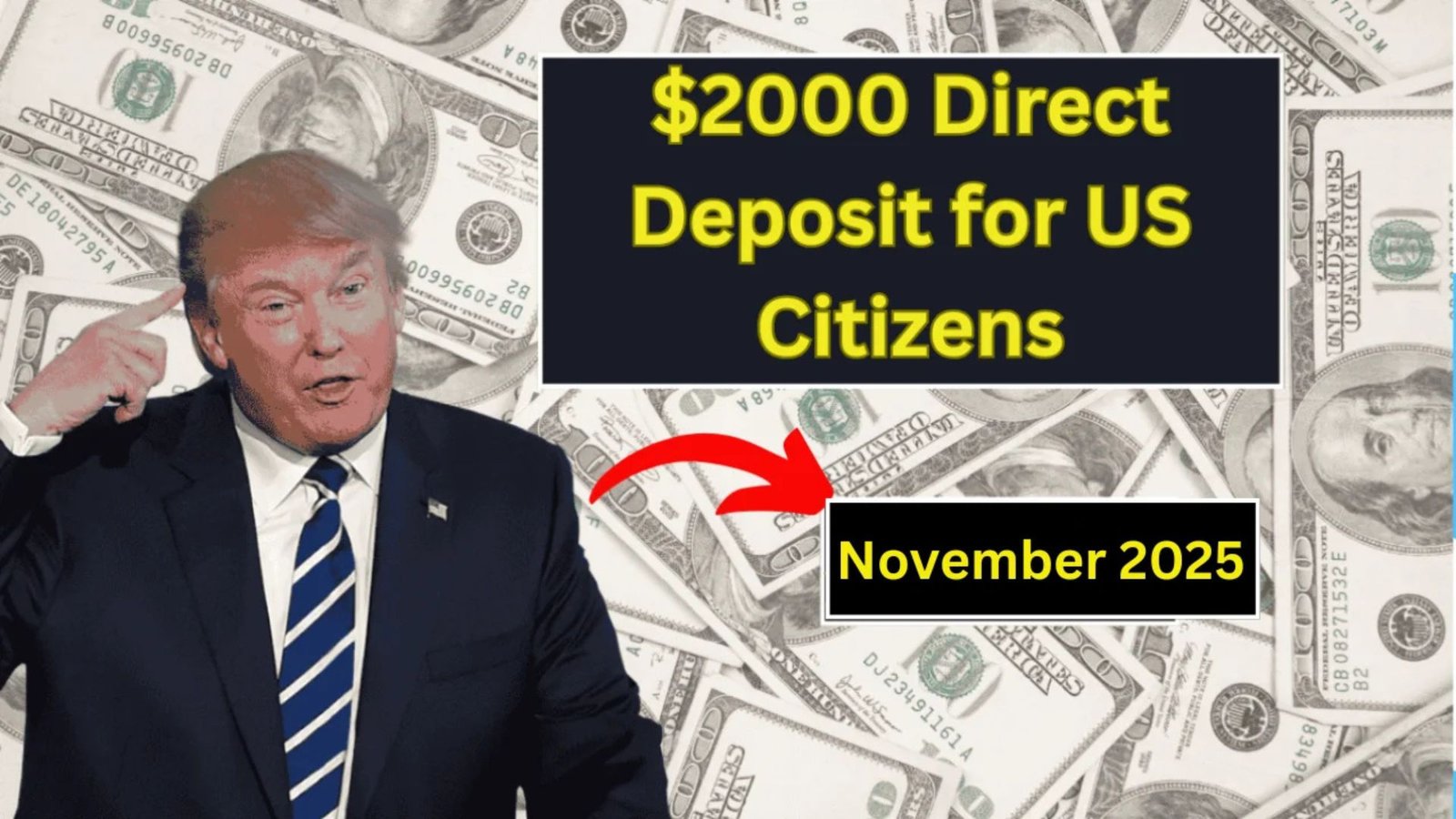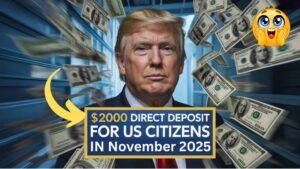Picture this: you check your bank account and find $2,000 has landed unexpectedly — no strings attached, just extra relief from the Internal Revenue Service (IRS). It sounds too good to be true, doesn’t it? But algorithms, legislation, and relief-program shifts have opened a potential window for eligible Americans to receive a $2,000 direct deposit payment — if they act quickly and meet the criteria. Here’s everything you need to know.
What It Is: A One-Time $2,000 Payment via Direct Deposit
This initiative is described as a new federal relief payment, set up to deliver $2,000 direct deposits to eligible individuals in November 2025. The aim is to deliver immediate support to households facing inflation, rising costs of living, and economic uncertainty. While the program is still being rolled out, the potential of extra cash being unlocked should motivate readers to check their status.
History & Background: How Did This Payment Come About?
In the aftermath of pandemic stimulus efforts, policy makers explored further direct relief tools. The idea of a “dividend” style payment or high-value direct deposit surfaced amid budget debates. Though no legislative framework is finalized, several credible outlets report the $2,000 payment is being administered by the IRS and tied to income thresholds, tax filings and bank account data. The concept echoes earlier stimulus payments like the Recovery Rebate Credit but uses updated data and delivery paths.
Why It’s Important Today
With inflation still biting and many Americans feeling the squeeze, a $2,000 automatic payment could make a significant difference — from tackling debt to stocking an emergency fund. For households in which spare cash is rare, this payment could shift the balance. On a macro scale, it illustrates how relief strategies may evolve: faster, more automated, and tied to electronic delivery.
How You Can Engage With, Use, or Benefit From It
If you hope to benefit, here’s how to prepare:
- Verify your latest tax return filing and ensure your banking information is up to date with the IRS.
- Check whether you meet the income eligibility rules listed below.
- Expect the payment via direct deposit (with paper check as back-up) in the timeframe given.
- Get ready to put the payment to strategic use—pay down high-interest debt, build savings, or cover urgent expenses.
Eligibility Rules at a Glance
| Filing Status | Income Limit for Full $2,000 Payment | Notes |
|---|---|---|
| Single filer | Up to $75,000 annual adjusted gross income | Full payment if under this threshold |
| Married filing jointly | Up to $150,000 combined income | Full payment if under threshold |
| Head of Household | Up to $112,500 annual income | Designed for single-parent or guardian households |
| Individuals above these thresholds may receive a reduced payment, while those below are eligible outright. Additional automatic inclusion may apply for Social Security recipients, veterans, and low-income benefit recipients. |
Important Payment Timeline
| Delivery Method | Expected Date Range | What to Do |
|---|---|---|
| Direct deposit | Mid to late November 2025 | Ensure bank account on file |
| Paper check | Late November 2025 | Confirm address is current |
Notable Facts & Statistics
- The $2,000 payment is not yet officially labelled as a “stimulus check” by the IRS, but functions similarly.
- The initiative uses recent tax-filing data plus benefit-recipients lists to identify eligible individuals automatically.
- Many sources still caution that legislation is required and the program could change.
- The payment arrives amid broader federal discussions around electronic delivery of tax refunds and payments: the IRS has signalled that from 2025 on, direct deposit will be the standard.
Expert Tips & Insights
- File or update your tax return even if your income is low—non-filers risk exclusion.
- Double-check your bank routing and account numbers in your IRS-linked profile—to avoid deposit delays.
- Don’t act on any message that demands personal banking info under the guise of this payment—scams are already mimicking “IRS relief deposits.”
- Use the $2,000 wisely—experts suggest allocating part toward high-interest debt or building an emergency reserve rather than spending it impulsively.
Frequently Asked Questions (FAQs)
Q: Do I need to apply to receive the payment?
A: According to the rollout details, no separate application is needed; eligibility will be assessed using tax filers’ data and benefit records.
Q: I’m above the income threshold—will I receive anything?
A: Possibly a reduced payment, depending on how the phase-out rules are applied.
Q: I didn’t file a recent tax return—can I still qualify?
A: To avoid being excluded, you should file a return or submit required forms so the IRS has your data and bank account information.
Conclusion: The Hidden $2,000 Could Be Yours—Check Now
The promise of a $2,000 direct deposit from the IRS is a powerful one—one that could arrive quietly in your account and make a real difference. As you’ve just learned, this payment is part of a broader shift in how relief is delivered: faster, more automatic, and more tied to data. The final twist? You may already be eligible without even realizing it. So file your return, verify your banking info, and stay alert—your next paycheck might be larger than you expect.



